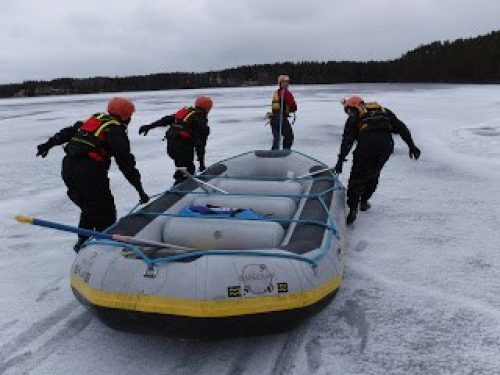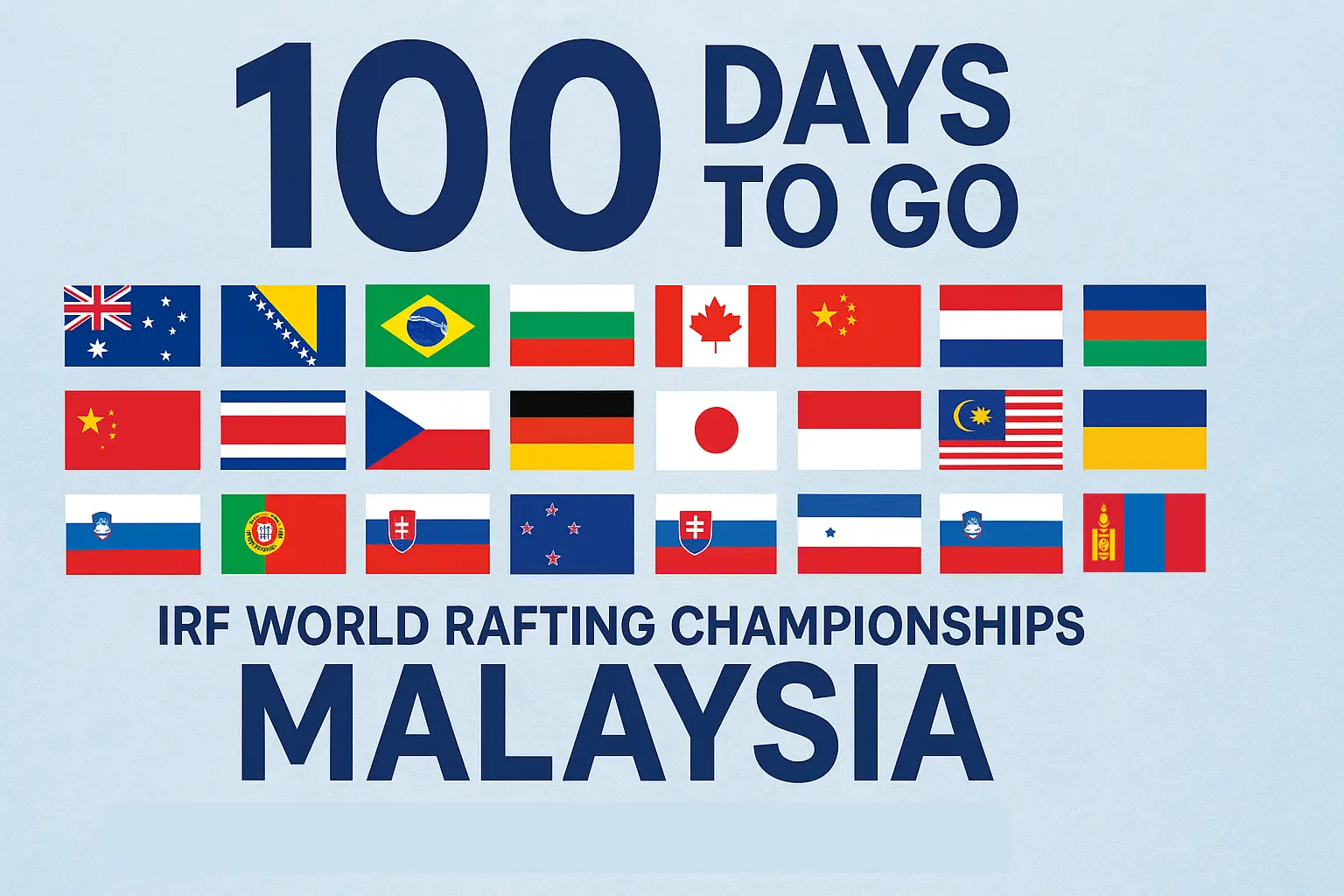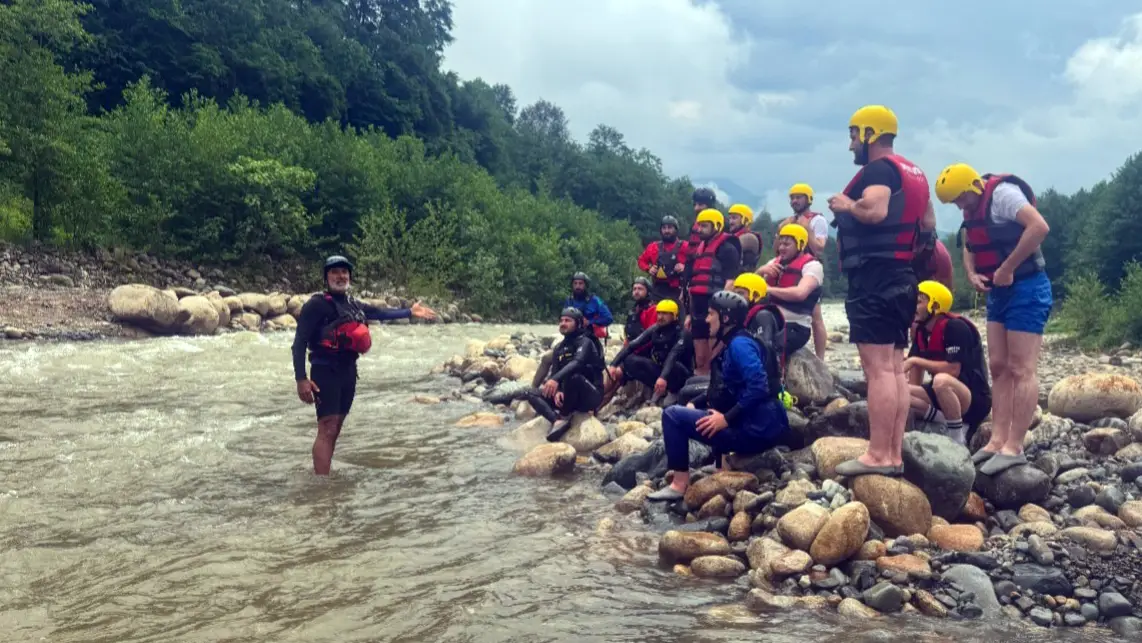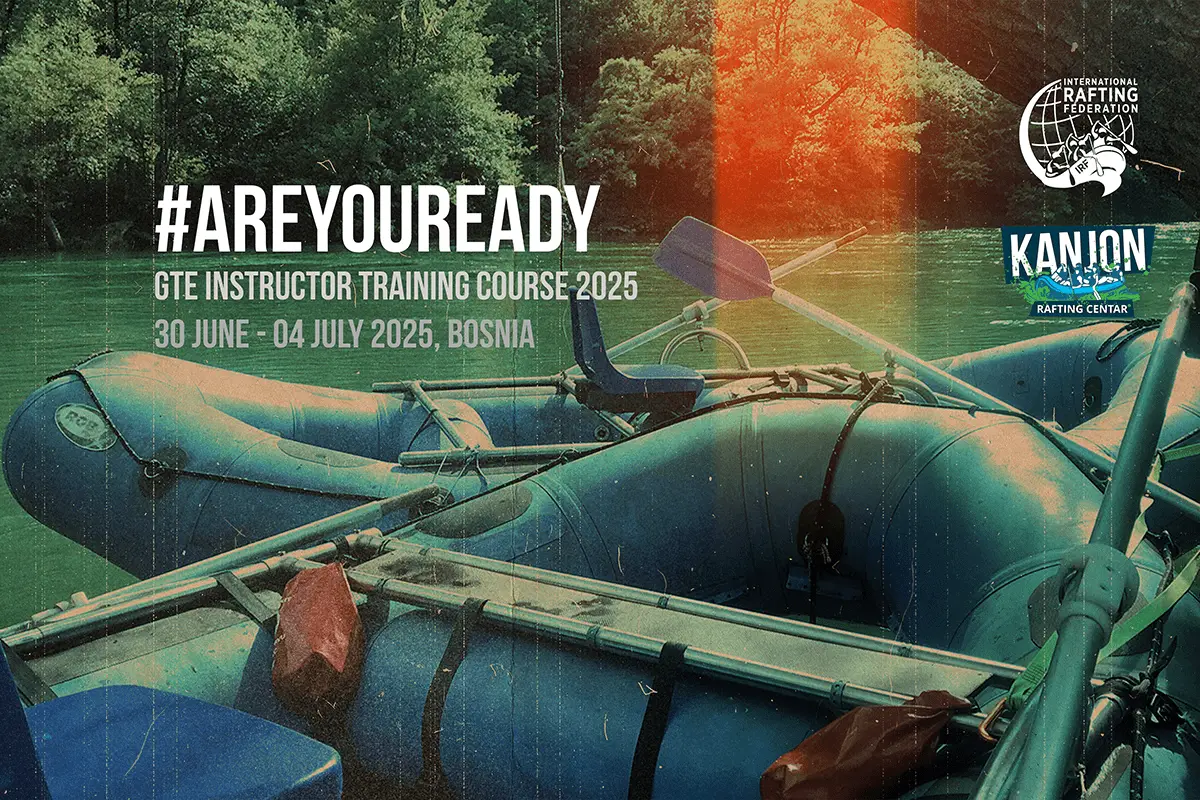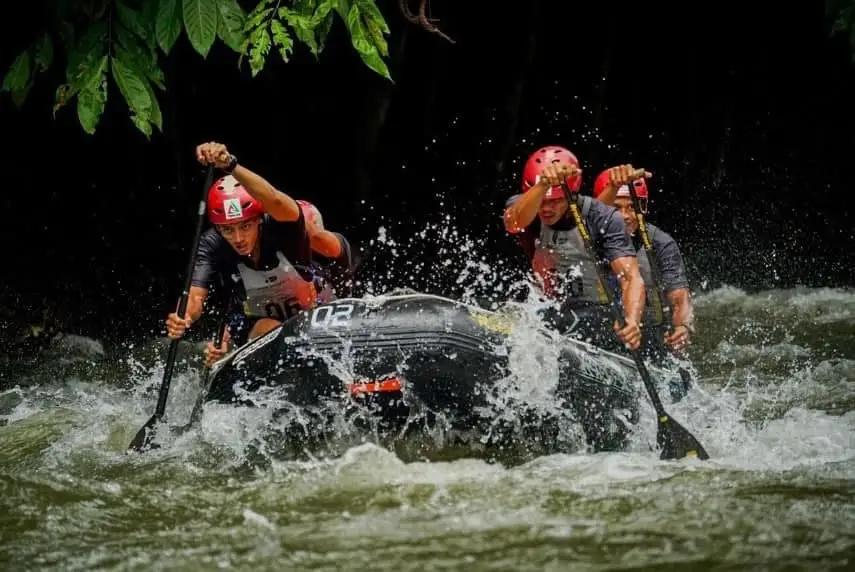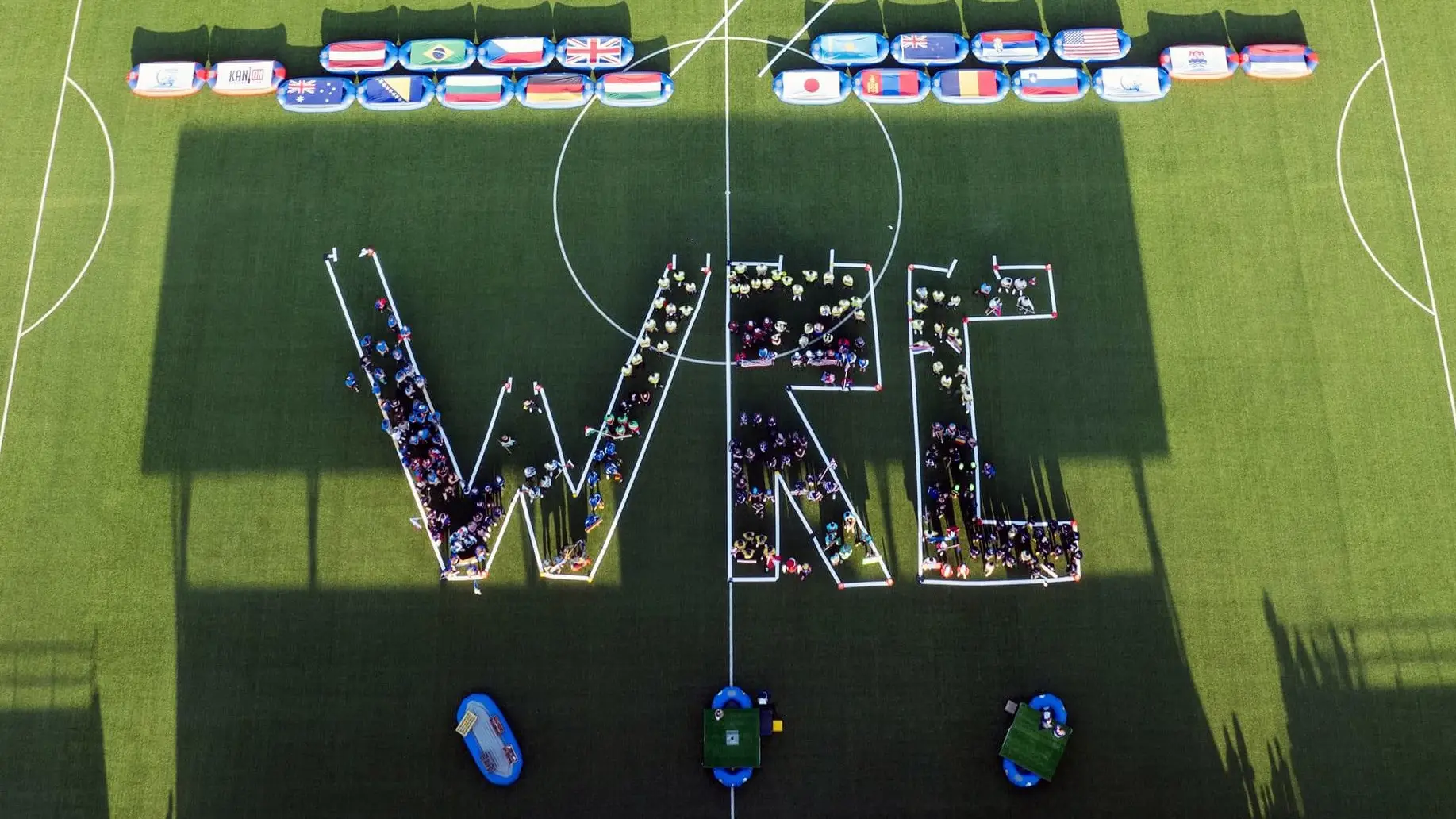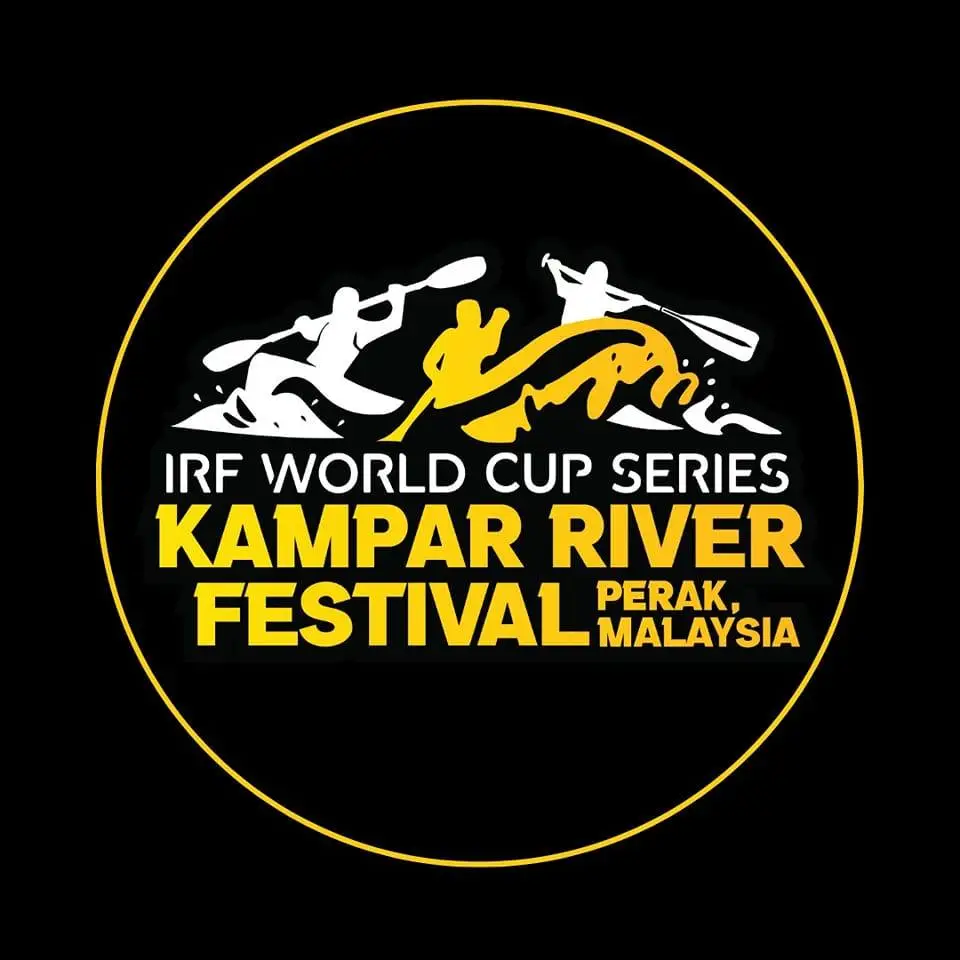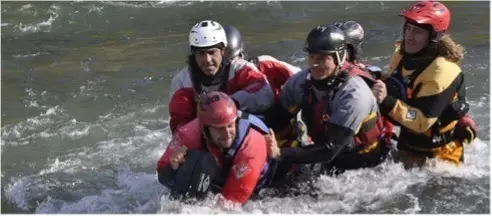By Mark Hirst
Finally, having been on the road delivering courses since late March, I got to spend some time at home in Finland. June 5th -11th had been in my diary for months for a 7 day IRF Guide Training Program combined with a Rescue 3 Europe Whitewater Rescue Technician Professional course based at the ideally located Basecamp Oulanka, on the shores of the beautiful Kitkajoki River, in the land of the Midnight sun.
 I arrived home in the south of Finland for a few days rest before the 9 hour drive northeast to Basecamp. This gave me time to make some lesson plans and prepare for the workshop. Miia told me to check the weather so I happily fired up my trusted weather website www.yr.no to check the weather. Doh! -1 degrees and snow, it was June for crying out loud as I reached for my dry suit & extra thermals.
I arrived home in the south of Finland for a few days rest before the 9 hour drive northeast to Basecamp. This gave me time to make some lesson plans and prepare for the workshop. Miia told me to check the weather so I happily fired up my trusted weather website www.yr.no to check the weather. Doh! -1 degrees and snow, it was June for crying out loud as I reached for my dry suit & extra thermals.
 The course was based just outside the Arctic circle in the village of Juuma. June in Finland is normally the beginning of summer and most of the snow and ice have melted. The rivers are at ideal levels and we are blessed with the Midnight Sun. During the drive North I realised this was not going to be the case. All of the lakes were still frozen & there was plenty of snow around still. The forecast for later in the week was for highs of +25 degrees and sun. I thought to myself I won’t hold my breath!
The course was based just outside the Arctic circle in the village of Juuma. June in Finland is normally the beginning of summer and most of the snow and ice have melted. The rivers are at ideal levels and we are blessed with the Midnight Sun. During the drive North I realised this was not going to be the case. All of the lakes were still frozen & there was plenty of snow around still. The forecast for later in the week was for highs of +25 degrees and sun. I thought to myself I won’t hold my breath!

The guys at Basecamp Oulanka had given me a really nice room and I unpacked my kit and prepared myself for a scouting trip the next day.
After a quick breakfast I threw on an extra set of thermals under my drysuit and met Henri, the host for the workshop. We were also joined by some of the course participants as this was going to be the first trip down the river of the season. So not only did I need to re-familiarize myself with the Kitkajoki, we also needed to see if the winter had made any changes to the river. Before all of this could happen we had to break a trail through the ice on the lake in order for us to get to the river. Easier said than done!

The commercial section we were to paddle today was called the Wild route, a short section around 5km in distance. The trip begins on the Juuma lake and then makes it’s way down the beautiful picturesque canyon with the Myllykoski rapid, class 2+, and the amazing 900m long Aallokkoski rapid before a compulsory portage around the Jyrävä waterfall. The trip normally lasts for around 2 hours. One of the unique points about this run is that the trip almost completes a full circle leaving a 15 minute walk back to the base so no return transport needed as its’ all done on foot.
The checkout run went well, we even got to see an impressive snow bridge over the Jyrävä waterfall.
 This weeks course was going to present me with 6 trainees & 2 trip leader candidates one of which (Nathan) had travelled all the way from Singapore to attend the course. The course progressed the following way:
This weeks course was going to present me with 6 trainees & 2 trip leader candidates one of which (Nathan) had travelled all the way from Singapore to attend the course. The course progressed the following way:
Day 1
The ice had slowly been melting so we had a bigger pool to practice our basic paddling techniques & commands. I am a big fan of spending some time on the flat water for the first day of a guide training programme. I feel it gives the students a chance to feel how a raft moves before you take it to the moving water. We also looked at safety talks before we got on the water. I delivered 2 examples of a safety talk. One of which was completed in silence to emphasize that actions speak louder than words. We then took to the Wild route to look at basic guiding and moving water skills. I got to test the skills of the 2 class 3 trip leader candidates (Nathan & Henri) on the Aallokkokoski section and they both did a really good job. The homework for day 1 was to learn the IRF river signals. I noticed them practicing these well into the night.
After watching Henri & Nathan give some really solid safety talks we took to the Wild route. The guides were starting to grow in confidence which was heartening to watch. A visit from the local press in the afternoon gave us the chance to look at swimming skills. Having spent 8 seasons working in Iceland as a guide I thought I was accustomed to cold water but I noticed that the water was freezing cold and I was happy that all of the students were in Ursuit drysuits. I made a mental note to myself to soften up a little and maybe start to use some neoprene gloves in my old age. That thought lasted as soon as I watched someone try to pack a throwbag wearing gloves. The local press were really interested in the course and produced an amazing article. Day 2 homework = safety talk planning.
Off to Russia we go. The logistics on the Kitkajoki are not easy, every few days the guides need to transport the rafts 20km down the river to the nearest road on the border with Russia. I took the opportunity to give the guides as much stick time as possible so I made them R2 in 5 rafts down the river and this enabled them a full day of stick time. We focused on eddy hopping, ferry gliding & river running strategies. The day started with ghosting the rafts down the Jyrävä waterfall. We stopped for lunch at a small fireplace in the Oulanka national park. The weather was now sunny and +18, the weather had changed at last.
The morning session started with the candidates each giving a section of the pre-trip safety demonstration. The candidates had the choice to do this in Finnish or English. I had roped my partner Miia & her mother to be live rafting customers for the students to practice and this turned out quite well. During today I wanted to assess both Henri & Nathan for their class 3 trip leader awards. I set 2 challenging scenarios on the river which both included run away flipped rafts and various amounts of devious carnage. Both Nathan & Henri demonstrated strong trip leader capabilities when dealing with the scenarios, hats off to the guys.
Today was the first day of the Rescue 3 component of the workshop. My biggest selling product this year has been the combined IRF & Rescue 3 workshops and this was to be my 5th one since March. I like to keep both of the aspects separate. This way I can concentrate solely on the core: raft guiding skills on the IRF section of the workshop. I can then incorporate the remaining IRF rescue elements into the WRT component, including swimming, flipping, throw bagging, rope work. Both the IRF & Rescue 3 elements complement each other really well. Next year I am already planning advanced workshops combining WRT advanced with class 4 trip leader & safety craft.

We spent the day working through the Rescue 3 philosophy, incorporating it into swimming & throw bag sessions and then into more complex situations including rescue harness release & tethered swimmer rescues.
Day 6
Today we looked at shallow water skills along with foot & body entrapments. After lunch we all spent some time on a simulated strainer exercise before finishing the day with a mechanical advantage class where we also completed the IRF rope work test.
Day 7
I was starting to feel it – I have been running course nonstop since March, today I felt as tired as the students looked. Straight onto the water we spent the time looking at 2 point tethered rafts and tensioned diagonals along with line crossing techniques. The weather turned poor in the afternoon so we finished up the course by looking at the theory side of the WRT programme before the IRF written paper & final debriefs.
During the debriefs I wanted to focus on making the students realize that practice practice practice is the recipe for being able to move forward and gain more experience. I look forward to visiting Basecamp Oulanka next year to see the progression of the guides.
 In the meantime congratulations to Henri, Nathan, Jessica, Maiju, Tiia, Janne, Markus, Miia, Kaisa & Ilkka, it was a pleasure to work with you.
In the meantime congratulations to Henri, Nathan, Jessica, Maiju, Tiia, Janne, Markus, Miia, Kaisa & Ilkka, it was a pleasure to work with you.
Many thanks to Miia Komi & Basecamp Oulanka!
Next week my travels will take me from the Arctic to the jungle in Thailand where I will get the opportunity to work some more with enthusiastic raft guides.
Happy paddling,
Mark

